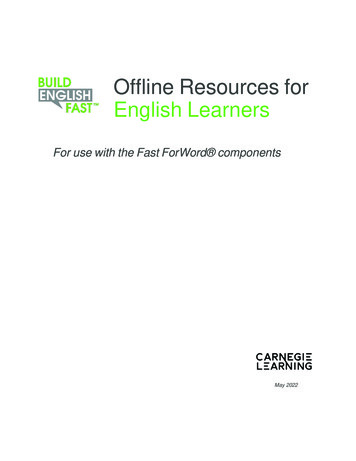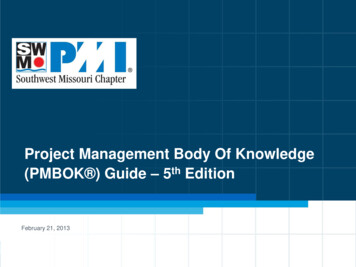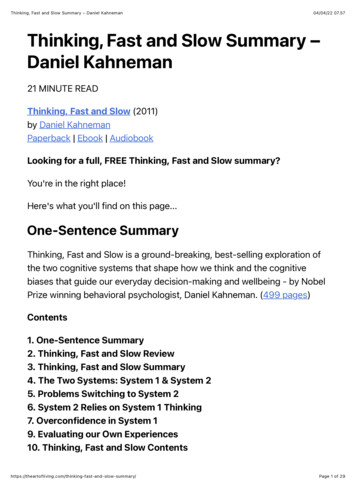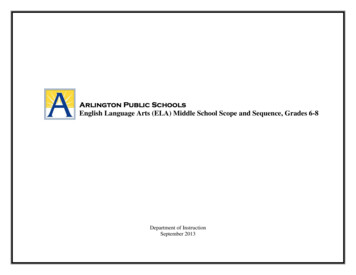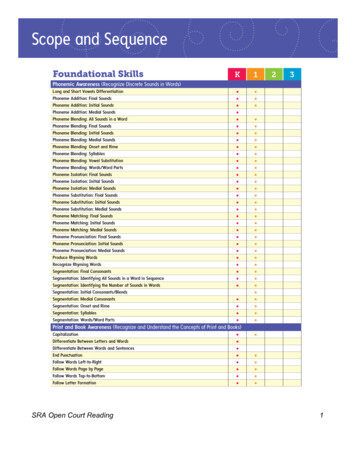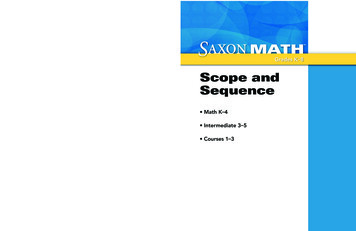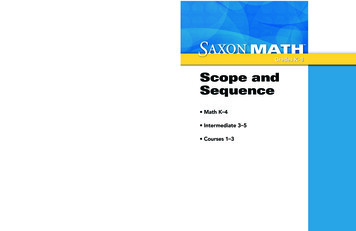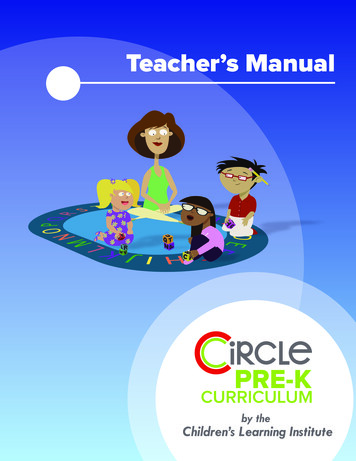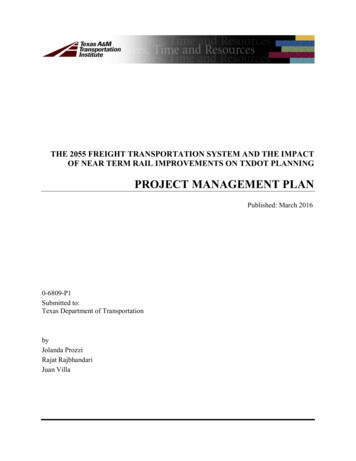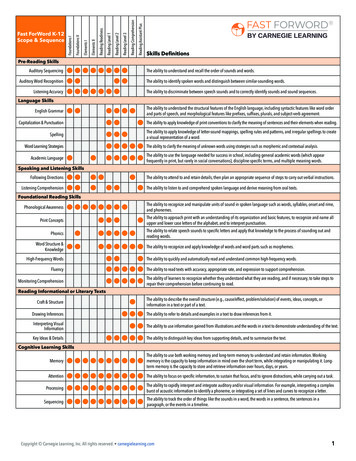
Transcription
Reading Assistant PlusReading ComprehensionReading Level 3Reading Level 2Reading Level 1Reading ReadinessElements IIElements IFoundations IIFoundations IFast ForWord K-12Scope & SequenceSkills DefinitionsPre-Reading SkillsAuditory SequencingAuditory Word RecognitionListening AccuracyThe ability to understand and recall the order of sounds and words.The ability to identify spoken words and distinguish between similar-sounding words.The ability to discriminate between speech sounds and to correctly identify sounds and sound sequences.Language SkillsEnglish GrammarThe ability to understand the structural features of the English language, including syntactic features like word orderand parts of speech, and morphological features like prefixes, suffixes, plurals, and subject-verb agreement.Capitalization & PunctuationThe ability to apply knowledge of print conventions to clarify the meaning of sentences and their elements when reading.SpellingThe ability to apply knowledge of letter-sound mappings, spelling rules and patterns, and irregular spellings to createa visual representation of a word.Word Learning StrategiesAcademic LanguageThe ability to clarify the meaning of unknown words using strategies such as morphemic and contextual analysis.The ability to use the language needed for success in school, including general academic words (which appearfrequently in print, but rarely in social conversations), discipline-specific terms, and multiple meaning words.Speaking and Listening SkillsFollowing DirectionsListening ComprehensionThe ability to attend to and retain details, then plan an appropriate sequence of steps to carry out verbal instructions.The ability to listen to and comprehend spoken language and derive meaning from oral texts.Foundational Reading SkillsPhonological AwarenessThe ability to recognize and manipulate units of sound in spoken language such as words, syllables, onset and rime,and phonemes.Print ConceptsThe ability to approach print with an understanding of its organization and basic features, to recognize and name allupper and lower case letters of the alphabet, and to interpret punctuation.PhonicsWord Structure &KnowledgeHigh-Frequency WordsFluencyMonitoring ComprehensionThe ability to relate speech sounds to specific letters and apply that knowledge to the process of sounding out andreading words.The ability to recognize and apply knowledge of words and word parts such as morphemes.The ability to quickly and automatically read and understand common high-frequency words.The ability to read texts with accuracy, appropriate rate, and expression to support comprehension.The ability of learners to recognize whether they understand what they are reading, and if necessary, to take steps torepair their comprehension before continuing to read.Reading Informational or Literary TextsCraft & StructureThe ability to describe the overall structure (e.g., cause/effect, problem/solution) of events, ideas, concepts, orinformation in a text or part of a text.Drawing InferencesThe ability to refer to details and examples in a text to draw inferences from it.Interpreting VisualInformationThe ability to use information gained from illustrations and the words in a text to demonstrate understanding of the text.Key Ideas & DetailsThe ability to distinguish key ideas from supporting details, and to summarize the text.Cognitive Learning SkillsMemoryThe ability to use both working memory and long-term memory to understand and retain information. Workingmemory is the capacity to keep information in mind over the short term, while integrating or manipulating it. Longterm memory is the capacity to store and retrieve information over hours, days, or years.AttentionThe ability to focus on specific information, to sustain that focus, and to ignore distractions, while carrying out a task.ProcessingThe ability to rapidly interpret and integrate auditory and/or visual information. For example, interpreting a complexburst of acoustic information to identify a phoneme, or integrating a set of lines and curves to recognize a letter.SequencingThe ability to track the order of things like the sounds in a word, the words in a sentence, the sentences in aparagraph, or the events in a timeline.Copyright Carnegie Learning, Inc. All rights reserved. carnegielearning.com1
Reading Assistant PlusReading ComprehensionReading Level 3Reading Level 2Reading Level 1Reading ReadinessFoundations IIFoundations IFast ForWordReading (GradesK-5) Scope &SequenceSkills DefinitionsPre-Reading SkillsAuditory SequencingAuditory Word RecognitionListening AccuracyThe ability to understand and recall the order of sounds and words.The ability to identify spoken words and distinguish between similar-sounding words.The ability to discriminate between speech sounds and to correctly identify sounds and sound sequences.Language SkillsEnglish GrammarCapitalization &PunctuationSpellingWord Learning StrategiesAcademic LanguageThe ability to understand the structural features of the English language, including syntactic features like word order and partsof speech, and morphological features like prefixes, suffixes, plurals, and subject-verb agreement.The ability to apply knowledge of print conventions to clarify the meaning of sentences and their elements when reading.The ability to apply knowledge of letter-sound mappings, spelling rules and patterns, and irregular spellings to create a visualrepresentation of a word.The ability to clarify the meaning of unknown words using strategies such as morphemic and contextual analysis.The ability to use the language needed for success in school, including general academic words (which appear frequently inprint, but rarely in social conversations), discipline-specific terms, and multiple meaning words.Speaking and Listening SkillsFollowing DirectionsListening ComprehensionThe ability to attend to and retain details, then plan an appropriate sequence of steps to carry out verbal instructions.The ability to listen to and comprehend spoken language and derive meaning from oral texts.Foundational Reading SkillsPhonological AwarenessThe ability to recognize and manipulate units of sound in spoken language such as words, syllables, onset and rime, andphonemes.Print ConceptsThe ability to approach print with an understanding of its organization and basic features, to recognize and name all upper andlower case letters of the alphabet, and to interpret punctuation.PhonicsThe ability to relate speech sounds to specific letters and apply that knowledge to the process of sounding out and reading words.Word Structure &KnowledgeHigh-Frequency WordsFluencyMonitoring ComprehensionThe ability to recognize and apply knowledge of words and word parts such as morphemes.The ability to quickly and automatically read and understand common high-frequency words.The ability to read texts with accuracy, appropriate rate, and expression to support comprehension.The ability of learners to recognize whether they understand what they are reading, and if necessary, to take steps to repair theircomprehension before continuing to read.Reading Informational or Literary TextsCraft & StructureThe ability to describe the overall structure (e.g., cause/effect, problem/solution) of events, ideas, concepts, or information in atext or part of a text.Drawing InferencesThe ability to refer to details and examples in a text to draw inferences from it.Interpreting VisualInformationThe ability to use information gained from illustrations and the words in a text to demonstrate understanding of the text.Key Ideas & DetailsThe ability to distinguish key ideas from supporting details, and to summarize the text.Cognitive Learning SkillsMemoryThe ability to use both working memory and long-term memory to understand and retain information. Working memory isthe capacity to keep information in mind over the short term, while integrating or manipulating it. Long-term memory is thecapacity to store and retrieve information over hours, days, or years.AttentionThe ability to focus on specific information, to sustain that focus, and to ignore distractions, while carrying out a task.ProcessingThe ability to rapidly interpret and integrate auditory and/or visual information. For example, interpreting a complex burst ofacoustic information to identify a phoneme, or integrating a set of lines and curves to recognize a letter.SequencingThe ability to track the order of things like the sounds in a word, the words in a sentence, the sentences in a paragraph, or theevents in a timeline.Copyright Carnegie Learning, Inc. All rights reserved. carnegielearning.com2
Reading Assistant PlusReading ComprehensionReading Level 3Reading Level 2Reading Level 1Elements IIElements IFast ForWordLiteracy (Grades6-12) Scope &SequenceSkills DefinitionsPre-Reading SkillsAuditory SequencingAuditory Word RecognitionListening AccuracyThe ability to understand and recall the order of sounds and words.The ability to identify spoken words and distinguish between similar sounding words.The ability to discriminate between speech sounds and to correctly identify sounds and sound sequences.Language SkillsEnglish GrammarCapitalization &PunctuationSpellingWord Learning StrategiesAcademic LanguageThe ability to understand the structural features of the English language, including syntactic features like word order and parts ofspeech, and morphological features like prefixes, suffixes, plurals, and subject-verb agreement.The ability to apply knowledge of print conventions to clarify the meaning of sentences and their elements when reading.The ability to apply knowledge of letter-sound mappings, spelling rules and patterns, and irregular spellings to create a visualrepresentation of a word.The ability to clarify the meaning of unknown words using strategies such as morphemic and contextual analysis.The ability to use the language needed for success in school, including general academic words (which appear frequently in print,but rarely in social conversations), discipline-specific terms, and multiple meaning words.Speaking and Listening SkillsFollowing DirectionsListening ComprehensionThe ability to attend to and retain details, then plan an appropriate sequence of steps to carry out verbal instructions.The ability to listen to and comprehend spoken language and derive meaning from oral texts.Foundational Reading SkillsPhonological AwarenessThe ability to recognize and manipulate units of sound in spoken language such as words, syllables, onset and rime, and phonemes.Print ConceptsThe ability to approach print with an understanding of its organization and basic features, to recognize and name all upper and lowercase letters of the alphabet, and to interpret punctuation.PhonicsWord Structure &KnowledgeHigh-Frequency WordsFluencyMonitoring ComprehensionThe ability to relate speech sounds to specific letters and apply that knowledge to the process of sounding out and reading words.The ability to recognize and apply knowledge of words and word parts such as morphemes.The ability to quickly and automatically read and understand common high-frequency words.The ability to read texts with accuracy, appropriate rate, and expression to support comprehension.The ability of learners to recognize whether they understand what they are reading, and if necessary, to take steps to repair theircomprehension before continuing to read.Reading Informational or Literary TextsCraft & StructureThe ability to describe the overall structure (e.g., cause/effect, problem/solution) of events, ideas, concepts, or information in a text orpart of a text.Drawing InferencesThe ability to refer to details and examples in a text to draw inferences from it.Interpreting VisualInformationThe ability to use information gained from illustrations and the words in a text to demonstrate understanding of the text.Key Ideas & DetailsThe ability to distinguish key ideas from supporting details, and to summarize the text.Cognitive Learning SkillsMemoryThe ability to use both working memory and long-term memory to understand and retain information. Working memory is thecapacity to keep information in mind over the short term, while integrating or manipulating it. Long-term memory is the capacity tostore and retrieve information over hours, days, or years.AttentionThe ability to focus on specific information, to sustain that focus, and to ignore distractions, while carrying out a task.ProcessingThe ability to rapidly interpret and integrate auditory and/or visual information. For example, interpreting a complex burst of acousticinformation to identify a phoneme, or integrating a set of lines and curves to recognize a letter.SequencingThe ability to track the order of things like the sounds in a word, the words in a sentence, the sentences in a paragraph, or the eventsin a timeline.Copyright Carnegie Learning, Inc. All rights reserved. carnegielearning.com3
FOUNDATIONS IExerciseGoal/TaskEle-BotDevelop English grammar andvocabulary skills by identifyingthe picture that best represents asentence or answers a question. English Grammar Word Structure & Knowledge Listening Comprehension Memory Attention Processing SequencingHoop NutDevelop listening accuracy andphonological awareness skills byselecting a target syllable from asequence of two syllables. Listening Accuracy Phonological Awareness Memory Attention ProcessingMoon RanchDevelop listening accuracy skillsby detecting when a new syllableinterrupts a repeated syllable. Listening Accuracy Phonological Awareness Memory Attention ProcessingRobo-DogDevelop auditory wordrecognition, phonologicalawareness, and vocabulary skillsby identifying the picture thatrepresents a spoken word. Auditory Word Recognition Phonological Awareness Word Structure & Knowledge Memory Attention ProcessingSky GymDevelop listening accuracy andauditory sequencing skills byreproducing a sequence of twosound sweeps. Listening Accuracy Auditory Sequencing Memory Attention Processing SequencingSpaceCommanderDevelop the skill of followingdirections by identifying ormanipulating shapes accordingto spoken instructions. Following Directions Word Structure & Knowledge Listening Comprehension Memory Attention Processing SequencingDevelop auditory wordrecognition and phonologicalawareness skills by matchingpairs of syllables and words. Listening Accuracy Auditory Word Recognition Phonological Awareness Memory Attention ProcessingWhalien MatchCopyright Carnegie Learning, Inc. All rights reserved. carnegielearning.comLanguage/Reading SkillsCognitive Skills4
FOUNDATIONS IIExerciseGoal/TaskLanguage/Reading SkillsCognitive SkillsCosmic ReaderDevelop English grammar,following directions, vocabulary,and listening comprehensionskills by listening to a story,answering questions, andfollowing instructions related tothe story. English Grammar Following Directions Word Structure & Knowledge Listening Comprehension Memory Attention Processing SequencingJumper GymDevelop advanced listeningaccuracy and auditorysequencing skills by identifying Listening Accuracy Auditory Sequencing Memory Attention ProcessingPaint MatchDevelop phonologicalawareness and sound-lettercorrespondence skills bymatching words into pairs usingthe fewest attempts. Listening Accuracy Auditory Word Recognition Phonological Awareness Phonics Memory Attention ProcessingPolar PlanetDevelop phonologicalawareness, word analysis, andsound-letter correspondenceskills by identifying a target wordwhen presented within a seriesof words. Listening Accuracy Auditory Word Recognition Phonological Awareness Phonics Memory Attention ProcessingTomb TrekDevelop phonological awarenessand sound-letter correspondenceskills by identifying a target wordwhen presented within asequence of two words. Listening Accuracy Auditory Word Recognition Phonological Awareness Phonics Memory Attention Processinga sequence of sound sweeps.Copyright Carnegie Learning, Inc. All rights reserved. carnegielearning.com Sequencing5
ELEMENTS IExerciseGoal/TaskAI AssistantDevelop English grammar andvocabulary skills by identifyingthe picture that best represents asentence or answers a question. English Grammar Word Structure & Knowledge Listening Comprehension Memory Attention Processing SequencingOcean ExplorerDevelop listening accuracy and Listening Accuracy MemorySonoLabDevelop listening accuracy skillsby detecting when a newsyllable interrupts a repeatedsyllable. Listening Accuracy Phonological Awareness Memory Attention ProcessingDevelop auditory wordrecognition and phonologicalawareness skills by matchingpairs of syllables and words. Listening Accuracy Auditory Word Recognition Phonological Awareness Memory Attention ProcessingSpace Salvageauditory sequencing skills byreproducing a sequence of twosound sweeps.Copyright Carnegie Learning, Inc. All rights reserved. carnegielearning.comLanguage/Reading Skills Auditory SequencingCognitive Skills Attention Processing Sequencing6
ELEMENTS IIExerciseGoal/TaskBioacoustics Lab Develop listening accuracy andphonological awareness skills byselecting a target syllable from asequence of two syllables.CinematchLanguage/Reading Skills Listening Accuracy Phonological AwarenessCognitive Skills Memory Attention ProcessingDevelop listening comprehension Listening Comprehensionskills by listening to stories andanswering questions. Memory Attention ProcessingDevelop auditory wordrecognition and academicvocabulary skills bydiscriminating among relatedmath and science terms. Word Structure & Knowledge Academic Language Memory Attention ProcessingMission ControlDevelop the skill of followingdirections by identifying ormanipulating shapes accordingto spoken instructions. Following Directions Word Structure & Knowledge Listening Comprehension Memory Attention Processing SequencingPicFlipDevelop auditory wordrecognition, phonologicalawareness, and vocabularyskills by distinguishing betweensimilar-sounding words. Auditory Word Recognition Phonological Awareness Word Structure & Knowledge Memory Attention ProcessingIlluminatorCopyright Carnegie Learning, Inc. All rights reserved. carnegielearning.com Sequencing7
READING READINESSExerciseGoal/TaskLanguage/Reading SkillsCognitive SkillsCoasterBuild phonemic awareness andletter-sound association skills byselecting the letter that matchesthe initial sound of a spoken CVsyllable. Listening Accuracy Phonological Awareness Phonics Memory Attention ProcessingHoundiniBuild phonemic awareness anddecoding skills by identifyingwords with a different initial,medial, or final sound than otherwords. Listening Accuracy Phonological Awareness Phonics Word Structure & Knowledge Memory Attention Processing SequencingHungry TummyBuild skills in following directionsand basic vocabulary byidentifying objects of variouscolors, shapes, and sizes, inresponse to verbal instructions. Auditory Word Recognition Following Directions Word Structure & Knowledge High-Frequency Words Memory Attention Processing Word Structure & Knowledge High-Frequency Words Attention ProcessingBuild letter recognition andnaming skills for uppercase andlowercase letters by identifyinguppercase and lowercase letters. Auditory Word Recognition Print Concepts Memory Attention ProcessingBuild letter recognition andnaming skills for uppercaseand lowercase letters byidentifying and selectingmatching pairs of uppercaseand lowercase letters in a grid. Auditory Word Recognition Print Concepts Memory Attention ProcessingInside the Tummy Build fine motor skills andhand-eye coordination bymatching objects by shapeand/or color.Packing PigGoes to WorkPacking PigHas LunchCopyright Carnegie Learning, Inc. All rights reserved. carnegielearning.com8
READING LEVEL 1ExerciseBear BagsGoal/TaskBuild phonological awarenessand phonics/decoding skills bysorting words based on initial,medial, and final sounds. Memory Attention Processing Word Structure & Knowledge Fluency Capitalization & Punctuation Word Learning Strategies Listening Comprehension Memory Attention Processing SequencingBuild listening comprehensionskills by answering multiplechoice questions about fictionand nonfiction passages thathave been read aloud. Print Concepts Word Structure & Knowledge Fluency Word Learning Strategies Academic Language Listening Comprehension Key Ideas & Details Monitoring Comprehension Memory Attention Processing SequencingBuild high-frequency wordrecognition and phonics/decoding skills by rapidlymatching spoken words towritten words. Auditory Word Recognition Phonics High-Frequency Words Memory Attention ProcessingBuild spelling and phonics skillsby selecting the correct lettersto complete the spellings ofspoken words. Auditory Word Recognition Phonological Awareness Phonics Spelling Memory Attention Processing SequencingBuild vocabulary skills bysorting words into differentcategories, such as conceptual,semantic, and grammatical. English Grammar Phonics Word Structure & Knowledge Word Learning Strategies Academic Language Memory Attention Processingcomprehension skills byselecting the correct picture,word, letter, or punctuation markto complete a sentence.Flying FishMagic RabbitQuail MailCognitive Skills Listening Accuracy Phonological Awareness Phonics Word Structure & KnowledgeBedtime Beasties Build listening and readingBuzz FlyLanguage/Reading SkillsCopyright Carnegie Learning, Inc. All rights reserved. carnegielearning.com Key Ideas & Details Monitoring Comprehension9
READING LEVEL 2ExerciseAnt AnticsBear Bags:More LunchGoal/TaskBuild reading comprehensionskills by selecting the sentencethat best describes a givenpicture.Language/Reading Skills English Grammar Word Structure & Knowledge High-Frequency Words Word Learning Strategies Monitoring ComprehensionCognitive Skills Memory Attention Processing SequencingBuild phonemic awareness and Listening Accuracydecoding skills by identifying and Phonological Awarenessmatching initial, medial, and final Phonicssounds in words, includingconsonant blends. Memory Attention ProcessingDog BoneBuild passage comprehensionskills by reading and/or listeningto both fiction and nonfictionpassages and answeringcomprehension questions. Print Concepts Word Structure & Knowledge Fluency Word Learning Strategies Academic Language Listening Comprehension Key Ideas & Details Monitoring Comprehension Memory Attention Processing SequencingFish FrenzyBuild high-frequency wordrecognition and decoding skillsby rapidly matching spokenwords to written words. Auditory Word Recognition Phonics High-Frequency Words Memory Attention ProcessingBuild reading comprehensionand vocabulary skills byselecting the correct word, letter,or punctuation mark to completea sentence. English Grammar Word Structure & Knowledge High-Frequency Words Fluency Capitalization & Punctuation Word Learning Strategies Listening Comprehension Independent Reading Monitoring Comprehension Memory Attention Processing SequencingBuild spelling and phonics skillsby selecting the correct letters tocomplete the spellings of spokenwords. Auditory Sequencing Auditory Word Recognition Phonological Awareness Phonics Spelling Memory Attention Processing SequencingLeaping LizardsMagic BirdCopyright Carnegie Learning, Inc. All rights reserved. carnegielearning.com10
READING LEVEL 3ExerciseGoal/TaskBook MonkeysBuild reading comprehensionskills by answering questions thataddress literal meaning, causeand-effect relationships, andinferential comprehension infiction and nonfiction passages. Fluency Word Learning Strategies Academic Language Key Ideas & Details Drawing Inferences Monitoring Comprehension Memory Attention Processing SequencingChicken DogBuild spelling and phonics skillsby selecting the correct letters tocomplete the spellings of spoken Auditory Sequencing Auditory Word Recognition Fluency Memory Attention ProcessingBuild vocabulary, grammar, anddecoding skills by sorting wordsinto appropriate categories. English Grammar Phonological Awareness Phonics Word Structure and Knowledge Memory Attention ProcessingBuild reading comprehensionskills by selecting the sentencethat best describes a givenpicture. English Grammar Fluency Word Learning Strategies Monitoring Comprehension Memory Attention Processing Sequencingwords.Scrap CatTwisted PicturesCopyright Carnegie Learning, Inc. All rights reserved. carnegielearning.comLanguage/Reading Skills Phonological Awareness Phonics SpellingCognitive Skills Sequencing11
READING COMPREHENSIONExerciseGoal/TaskArt WalkDevelop reading comprehensionskills by manipulatinggrammatical forms and structuresto construct sentences aboutvisual information. English GrammarWord Structure & KnowledgeFluencyWord Learning StrategiesAcademic LanguageIndependent ReadingMonitoring ComprehensionInterpreting Visual Information Memory Attention Processing SequencingCognobotDevelop reading comprehensionskills by answering literal, causeand-effect, relationship, andinferential questions about fictionand nonfiction texts, schedules,instructions, and tables. Following DirectionsFluencyWord Learning StrategiesAcademic LanguageKey Ideas & DetailsIndependent ReadingMonitoring ComprehensionCraft & StructureDrawing InferencesInterpreting Visual Information Memory Attention Processing SequencingData StreamDevelop reading comprehensionstrategies by answering questionsabout fiction and nonfictiontexts, and working with graphicorganizers and summaries. FluencyWord Learning StrategiesAcademic LanguageKey Ideas & DetailsIndependent ReadingMonitoring ComprehensionCraft & StructureDrawing InferencesInterpreting Visual Information Memory Attention Processing SequencingPrint ShopDevelop reading comprehensionskills by selecting the correctparaphrase of a narrative text. English GrammarWord Structure & KnowledgeFluencyKey Ideas & DetailsIndependent ReadingMonitoring Comprehension Memory Attention Processing SequencingRoad TripDevelop reading comprehensionskills by selecting the right wordto complete a sentence. PhonicsWord Structure & KnowledgeFluencyWord Learning StrategiesAcademic LanguageIndependent ReadingMonitoring Comprehension Memory Attention Processing SequencingCopyright Carnegie Learning, Inc. All rights reserved. carnegielearning.comLanguage/Reading SkillsCognitive Skills12
Scope & Sequence Foundations I Foundations II Elements I Elements II Reading Readiness Reading Level 1 Reading Level 2 Reading Level 3 Reading Comprehension Reading Assistant Plus . Craft & Structure The ability to describe the overall structure (e.g., cause/effect, problem/solution) of events, ideas, concepts, or information in a .
